
CLB Power Supply for Variable
Low Frequency
Comdel's proven CLB Series of Low Frequency Power Supplies provide 2500 to 12,000 Watts of power in varying output frequency with a superior design in a small, lightweight package.
Learn more.
Comdel
11 Kondelin Road
Gloucester, MA 01930
Tel: 978-282-0620 or 800-468-3144
Fax: 978-282-4980
www.comdel.com
info@comdel.com
|

From AR Coatings to Notch Filters, and from TCOs to DBRs, Evatec offers customized coating platforms and complete process solutions based on enhanced evaporation and sputter.
Phone: (603) 669-9656
www.evatecnet.com
E-Mail:infoNA@evatecnet.com
|
64 CFM List $8,250
3 to 64 CFM, 6 to 108 m3/hour. All voltages, 1 and 3 phase. Fomblim/Krytox available. 2 year parts & labor warranty, satisfaction guaranteed.Prices and Complete Specs at:
|

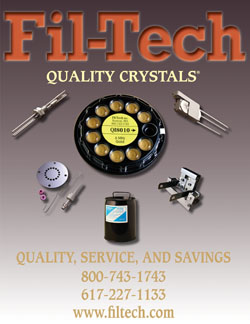
Fil-Tech's New 2013 Catalog Fil-Tech's Quality Crystals® Gold, Longer Life Gold, and Alloy 6MHz and 5MHz styles. Fil-Tech supplies rate monitors, sensorheads, feedthroughs, ebeam and ion source parts. Fil-Tech's FT704 replaces DC704. Call for catalog and Technical Bulletins. Fil-Tech, Inc. 617-227-1133 or 800-743-1743 www.filtech.com paula@filtech.com |
 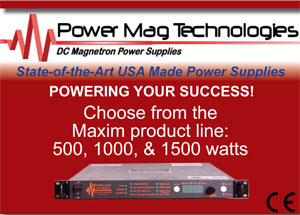
THREE STEPS TO SUCCESS
Power Mag Technologies now offers 3 different power levels of DC Magnetrons to enhance your sputtering process with the Maxim line of power supplies.
Contact: 877.513.3295
|
 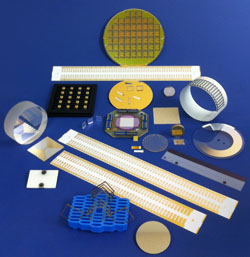
Thin-Films Research is prepared to meet your custom thin-film coating requirements. Using state-of-the-art equipment and over 40 years of experience, Thin-Films Research offers technology for the electro-optics, semiconductors, sensors & medical electronic industries. Learn More
Thin-Films Research, Inc.
270 Littleton Road
Westford, MA 01886
Phone: 978-692-9530
Fax: 978-692-9531
E-Mail: sales@thinfilmsresearch.com |

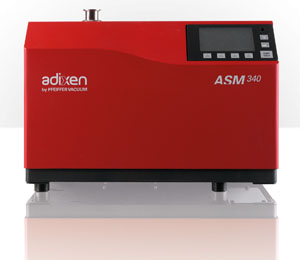
Fast Leak Detector
The ASM 340 is an easy-to-use, high performance and durable leak detector that provides high throughput. It performs He/H leak detection in both vacuum and sniffing modes.
Learn More.
Pfeiffer Vacuum, Inc. Phone: 603-578-6500 Toll Free: 800-248-8254 Web site: www.pfeiffer-vacuum.com contact@pfeiffer-vacuum.com |
Bellows Designed to
Your Specification
The BellowsTech Online Design Form makes bellows design simple. No fields required; attach drawings or PDF sketches securely online. Our engineers will begin the process of creating a solution using the details supplied.
BellowsTech, LLC
Visit Us Online
Phone: 386-615-7530
Email: bellows@bellowstech.com
|

Smart solutions for surface technology from Bürkert - perfect for optimal process yields, high quality and peace of mind.
Bürkert. We make ideas flow.
Bürkert Werke GmbH
Maik Lösel
Segment Manager Gas
Christian-Bürkert-Str. 13-17
74653 Ingelfingen, Germany
Phone: +49 35952 36 362
Email: maik.loesel@burkert.com
|


Hiden RGA Series
Residual Gas Analysers for Vacuum Diagnostics and Vacuum Process Analysis
E-mail address: info@hiden.co.uk
Phone: +44 [0] 1925 445225 (UK)
or [1] 734 542 6666 (USA)
Website: www.HidenAnalytical.com
|

Temescal Systems & Components
Industry leaders choose Temescal for our unparalleled expertise in electron beam coating system and component solutions. Embrace the cloud.
Learn more.
http://www.temescal.net
(800) 522-1215
email: temescalinfo@ferrotec.com
|
 One-week Course One-week Course in the Practical Design and Production of Optical Thin Films October 14-18
Charleviox, MI USA
Comprehensive and Comprehensible!
|


USB-Powered Reflectometer for Thin-Film Measurement
Quickly measure thickness and index of single- and multi-layer films using aRTie, which simultaneously measures reflectance and transmittance.
Learn more.
Filmetrics, Inc.
Phone: 858-573-9300
www.filmetrics.com
info@filmetrics.com
|

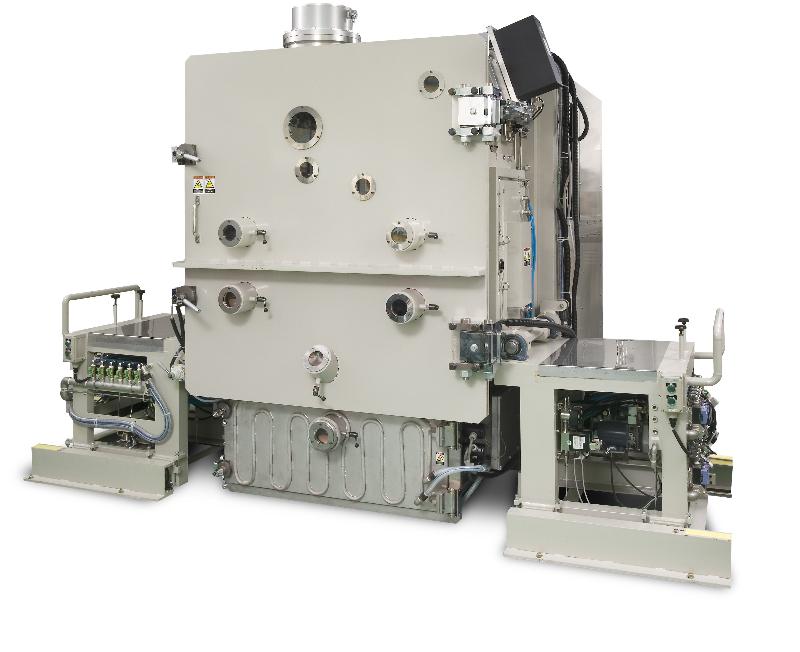
ULVAC's SPW-030 roll coating system is capable of processing 300 mm wide substrate compositions including thin-gauge metal rolls and polymeric materials for R&D and Pilot-scale production. Learn More.
ULVAC Technologies, Inc. Visit Us Online Tel: 1-978-686-7550
E-mail: sales@us.ulvac.com
|

Ferrofluidic Seals
Ferrotec's Ferrofluidic® vacuum feedthroughs set the standard for precision sealing in rotary motion applications. Available in standard sizes or customized for your requirements. Learn more.
http://seals.ferrotec.com
(800) 258-1788
email: info@ferrotec.com
|
 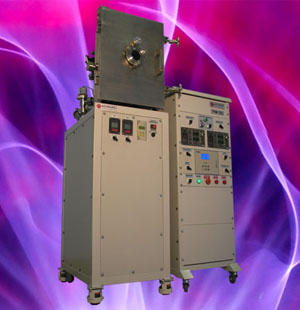
Versatile and Reliable Vacuum Deposition Systems (e-beam and thermal evaporation, ion beam and magnetron sputtetring) for Universities and industry, components for PVD and sputtering systems. ROBVAC Fryazino, Moscow Region, Russia Tel: +7 495 966 2814 www.robvac.com |

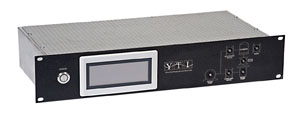
Automatic Valve Controller The INTELLITROL series of automatic valve controllers provide total control of vacuum operations. It offers fully automatic, protected manual mode and service mode for complete manual operation. Learn More.
YTI Vacuum Coating
Equipment and Service
Phone: 860.429.1908
Intellitrol@ytionline.com
www.ytionline.com
|

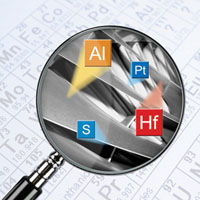
Take Control of Contaminants
Analytical Services Worldwide
Composition | Trace Elements
Thermal Properties
Full Range of Analytical Services
Innovative Analytical Solutions
Phone: 315-431-9900
svc@eaglabs.com
www.eaglabs.com
|

INFICON thin film deposition controllers, monitors and accessories, including customizable sensors and feedthroughs, offer features, function and value targeted to your application. View our catalog and contact us today! |

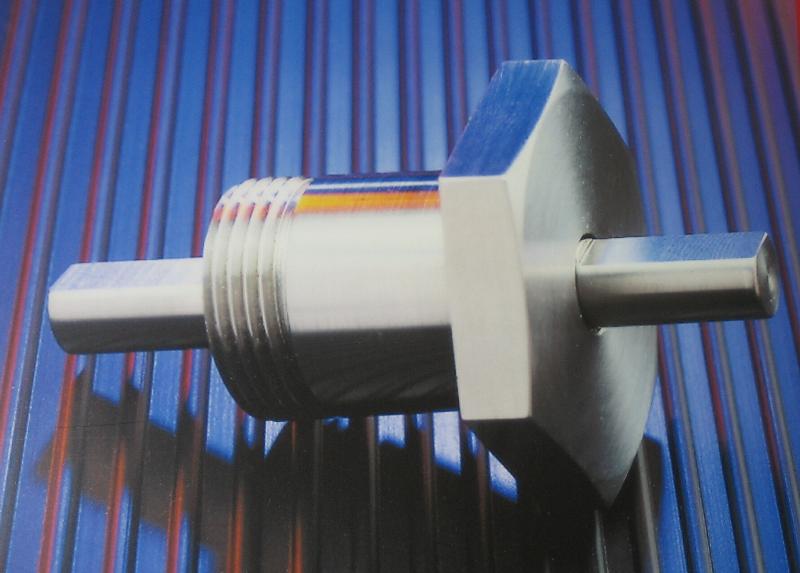
Rotary Motion Feedthroughs
Rigaku offers a full range of feedthroughs, including low cost SuperseaL, hollow shaft, solid shaft, motorized, UHV, custom designs and competitive direct replacements.
Learn More
Rigaku Vacuum Products
www.rigakuvacuum.com
E-mail: vacuum-info@rigaku.com
Phone: 603-890-6001
|
|
Now Open!
SVC Digital Library

On-Line Access to the
SVC Annual Technical Conference Proceedings
SEARCH with intuitive features TAG favorite titles
SHARE abstracts via e-mail
DOWNLOAD manuscripts
FREE for members
The database currently contains all manuscripts since 2007. Previous years will continuously be incorporated.
|
|
|
|
Zinc-Oxynitride TFTs: Toward a New High-Mobility Low-Cost Thin-Film Semiconductor
|
From Information Display, Vol. 29, No. 2, Mar/Apr, by Yan Ye (Applied Materials): "Demands for high-performance, low-cost, and low-energy-consumption displays continue to drive the development of new semiconductor materials. This article will look at the achievable  performance of indium-gallium-zinc-oxide (IGZO) as well as that of other metal-oxide semiconductor materials for TFT applications. Efforts to make IGZO TFTs prevalent in display manufacturing are still ongoing as are searches for even better semiconductor materials that will match the high performance of low-temperature polysilicon (LTPS) TFTs and the low cost of amorphous-silicon (a-Si) TFTs. Zinc oxynitride (ZnON) is described here as one possible path to realizing these performance and cost goals. ZnON has some unique characteristics compared to other oxides." performance of indium-gallium-zinc-oxide (IGZO) as well as that of other metal-oxide semiconductor materials for TFT applications. Efforts to make IGZO TFTs prevalent in display manufacturing are still ongoing as are searches for even better semiconductor materials that will match the high performance of low-temperature polysilicon (LTPS) TFTs and the low cost of amorphous-silicon (a-Si) TFTs. Zinc oxynitride (ZnON) is described here as one possible path to realizing these performance and cost goals. ZnON has some unique characteristics compared to other oxides."
|
|
Cracking the Potential of the Glass Wafer Market
|
From Solid State Technology, April 11, 2013: "Over the last few years, glass has gained considerable interest from the semiconductor industry due to its very attractive electrical, physical and chemical properties, as well as its prospects for a relevant and cost-efficient solution. The application scope of glass substrates in the semiconductor field is broad and highly diversified. The demand for glass is growing, and glass has already been adapted for various and unique wafer-processing functionalities and platforms supporting a wide range of end-applications. glass offers the best value proposition in terms of cost, flexibility, mechanical rigidity and surface flatness. Mainly driven by the wafer-level packaging industry, the glass wafer market is expected to grow from $158 million in 2012 to $1.3B by 2018.In terms of wafers shipped, a 4x glass wafer growth is expected in the semiconductor industry over the next five years, achieving more than 15 million 8 inch equivalent wafer starts per year by 2018. The top five suppliers, Schott (G), Tecnisco (JP), PlanOptik (G), Bullen (US) and Corning (US), will share more than 70 percent $158M glass substrate market this year."
Source: Read the full article...
|
|
New Material Approach Should Increase Solar Cell Efficiency
|
From University of Illinois, Urbana-Champaign, April 23, 2013, by Rick Kubetz: "University of Illinois, Urbana-Champaign researchers brought together aspects of condensed matter physics, semiconductor device engineering, and photochemistry to develop a new form of high-performance solar photocatalyst based on the combination of the  TiO2 (titanium dioxide) and other "metallic" oxides that greatly enhance the visible light absorption and promote more efficient utilization of the solar spectrum for energy applications. They observed that the unusual electronic structure of SrRuO3 is also responsible for unexpected optical properties including high absorption across the visible spectrum and low reflection compared to traditional metals. By coupling this material to TiO2 they have demonstrated enhanced visible light absorption and large photocatalytic activities. SrRuO3 absorbs more than 75 times more light than TiO2." TiO2 (titanium dioxide) and other "metallic" oxides that greatly enhance the visible light absorption and promote more efficient utilization of the solar spectrum for energy applications. They observed that the unusual electronic structure of SrRuO3 is also responsible for unexpected optical properties including high absorption across the visible spectrum and low reflection compared to traditional metals. By coupling this material to TiO2 they have demonstrated enhanced visible light absorption and large photocatalytic activities. SrRuO3 absorbs more than 75 times more light than TiO2."
Their paper, "Strong Visible-Light Absorption and Hot-Carrier Injection in TiO2/SrRuO3 Heterostructures," appears in the journal Advanced Energy Materials.
Source: Read the full article...
|
Upcoming Conferences of Interest to Vacuum Coaters
|
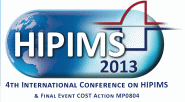 Fourth International Conference on Fundamentals and Industrial Applications of HIPIMS: in conjunction with COST Action on Highly Ionised Pulse Plasma Processes June 10-13, 2013, Civic Center, Stadthalle Braunschweig, GermanyFeaturing SVC Tutorial Courses (June 10-11): Fourth International Conference on Fundamentals and Industrial Applications of HIPIMS: in conjunction with COST Action on Highly Ionised Pulse Plasma Processes June 10-13, 2013, Civic Center, Stadthalle Braunschweig, GermanyFeaturing SVC Tutorial Courses (June 10-11):- High Power Impulse Magnetron Sputtering - The Practice of Reactive Sputtering - HIPIMS Applications Website: http://www.hipimsconference.com/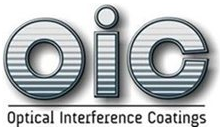 OIC: Optical Interference Coatings OIC: Optical Interference CoatingsJune 16-21, 2013, Fairmont Chateau Whistler, British Columbia, Canada Website: http://www.osa.org/en-us/meetings/topical_meetings/optical_interference_coatings_%28oic%29/  ISSP 2013: The 12th International Symposium on Sputtering & Plasma Processes ISSP 2013: The 12th International Symposium on Sputtering & Plasma ProcessesJuly 10-12, 2013, Kyoto Research Park, Kyoto, Japan Website: http://issp2013.org/

ALD 2013
13th International Conference on Atomic Layer Deposition
July 28-31, 2013
San Diego Marriott Marquis & Marina, San Diego, CA
Website: http://www.ald-avs.org/
|
|
Batteries Get Flexible
| | From Chemical & Engineering News, May 6, 2013, by Mitch Jacoby: "Imagine how versatile a rechargeable battery would be if it were lightweight and thin and could be flexed, stretched, and rolled up. Or if it were long-lasting, powerful, and free from the safety concerns.
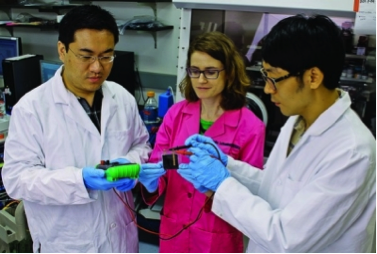 Organic polymers endowed with unusual combinations of properties may hold the key to these kinds of advanced batteries. That potential payoff is driving researchers in academia and industry to explore and develop electrically conducting polymeric materials to serve as electrodes and electrolytes in rechargeable lithium batteries. The potential and the problems motivated a number of researchers working on lithium-polymer batteries and related devices to gather early this spring at the American Physical Society national meeting in Baltimore. Those scientists, along with others, predict that new types of high-performance lithium-polymer batteries will soon join ranks with the small number already commercialized. Organic polymers endowed with unusual combinations of properties may hold the key to these kinds of advanced batteries. That potential payoff is driving researchers in academia and industry to explore and develop electrically conducting polymeric materials to serve as electrodes and electrolytes in rechargeable lithium batteries. The potential and the problems motivated a number of researchers working on lithium-polymer batteries and related devices to gather early this spring at the American Physical Society national meeting in Baltimore. Those scientists, along with others, predict that new types of high-performance lithium-polymer batteries will soon join ranks with the small number already commercialized.
- In today's Li-ion batteries, polymers serve as inert or passive materials in two limited roles. One is as a glue, the other is as a separator. However, by judiciously choosing polymers to replace some battery components, researchers and a handful of manufacturers are now designing batteries with atypical properties such as mechanical flexibility.
- At Texas A&M University researchers found that the theoretical charge capacity of polyaniline and other conjugated polymers stacks up well against, and in some cases exceeds, that of conventional Li-ion battery cathode materials such as LiCoO2 and LiFePO4."
|
|
The Evolution of Coatings for Endovascular Devices
|
From Medical Device and Diagnostic Industry News, May 3, 2013, by Bob Hergenrother (SurModics, Inc.):
"Hydrophilic coatings are often used to improve access for delivery and placement of endovascular devices such as catheters. These coatings increase a device's lubricity, which reduces the frictional forces between the device and other devices or the vascular tissue itself. Hydrophilic coatings were traditionally evaluated by measuring sliding force, such as coefficient of friction, and durability through repeated cycling. While those measures of lubricity and durability are still used, today coatings are subjected to a newer performance parameter: particulate generation. Many device developers now consider particulate reduction an important design criterion during product development and include evaluations of particulates in their hydrophilic coatings as part of internal testing and more attention is being paid to the variables that could contribute to particulates. Manufacturers are now considering improved coatings, methods for assessing particulate generation related to devices, and ways to actively reduce particulates.
 For device-coatings manufacturers, challenge comes in minimizing particulates while optimizing coating lubricity. Recent advancements in technology have enabled the development of improved coating options that deliver excellent lubricious characteristics in lower-particulate formulas. This article summarizes the considerations to keep in mind when evaluating lubricious coatings for endovascular devices." For device-coatings manufacturers, challenge comes in minimizing particulates while optimizing coating lubricity. Recent advancements in technology have enabled the development of improved coating options that deliver excellent lubricious characteristics in lower-particulate formulas. This article summarizes the considerations to keep in mind when evaluating lubricious coatings for endovascular devices."
|
|
Graphene Layers Dramatically Reduce Wear and Friction on Sliding Steel Surfaces
|
From Argonne National Laboratory, April 25, 2013, by Jared Sagoff: "Scientists at the U.S. Department of Energy's Argonne National Laboratory have recently discovered that they could substitute one-atom-thick graphene layers for either solid- or oil-based lubricants on sliding steel surfaces, enabling a dramatic reduction in the amount of wear and friction. New studies led by Argonne materials scientists show that graphene works equally well in humid and dry environments. 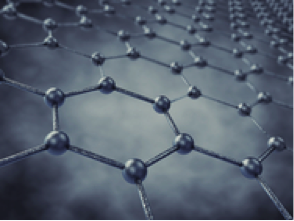 Furthermore, the graphene is able to drastically reduce the wear rate and the coefficient of friction (COF) of steel. The marked reductions in friction and wear are attributed to the low shear and highly protective nature of graphene, which also prevents oxidation (tribo-corrosion) of the steel surfaces when present at sliding contact interfaces. It is interesting to see that even partial coatings are very effective at reducing friction because of the ability of the graphene to reorient itself during initial wear cycles." Furthermore, the graphene is able to drastically reduce the wear rate and the coefficient of friction (COF) of steel. The marked reductions in friction and wear are attributed to the low shear and highly protective nature of graphene, which also prevents oxidation (tribo-corrosion) of the steel surfaces when present at sliding contact interfaces. It is interesting to see that even partial coatings are very effective at reducing friction because of the ability of the graphene to reorient itself during initial wear cycles."
Source: Read the full article...
|
|
Two-Dimensional Nanotechnology Materials Beyond Graphene
|
From Nanowerk Spotlight, April 15, 2013, by Michael Berger: " "A new, very comprehensive review article in ACS Nano ("Progress, Challenges, and Opportunities in Two-Dimensional Materials Beyond Graphene") takes a look at our current knowledge of 2D materials beyond graphene. The paper outlines the different chemical classes of 2D materials and discusses the various strategies to prepare single-layer, few-layer, and multilayer assembly materials in solution, on substrates, and on the wafer scale.
 In addition, the authors present an experimental guide for identifying and characterizing single-layer-thick materials, as well as outlining emerging techniques that yield both local and global information. They describe the differences that occur in the electronic structure between the bulk and the single layer and discuss various methods of tuning their electronic properties by manipulating the surface. Finally, they highlight the properties and advantages of single-, few-, and many-layer 2D materials in field-effect transistors, spin- and valley-tronics, thermoelectrics, and topological insulators, among many other applications."
Source: Read the full article... In addition, the authors present an experimental guide for identifying and characterizing single-layer-thick materials, as well as outlining emerging techniques that yield both local and global information. They describe the differences that occur in the electronic structure between the bulk and the single layer and discuss various methods of tuning their electronic properties by manipulating the surface. Finally, they highlight the properties and advantages of single-, few-, and many-layer 2D materials in field-effect transistors, spin- and valley-tronics, thermoelectrics, and topological insulators, among many other applications."
Source: Read the full article...
|
Quantifying Inhomogeneities in Silicon-Rich Oxide Thin Films
| From SPIE Newsroom, April 2, 2013, by Mile Ivanda, Davor Ristic, Maurizio Ferrari, and Giorgo Speranza: "Nonstoichiometric silicon oxide (SiOx with x<2) thin films are technologically relevant materials because they serve as thin boundary layers between crystalline silicon and thermally grown oxides in many electronics and optoelectronics. The presence of these boundary oxides strongly affects the electronic properties of silicon. The performance and properties of electronic devices and light-emitting materials are dictated by the quality of the silicon-rich oxide films, which is influenced by inhomogeneities in the films. While the real microscopic structure of SiOx is still a subject of debate, studies have been conducted to establish the composition and structure of SiOx phases. The researchers prepared SiOx thin films using low-pressure chemical vapor deposition (LPCVD), quantified inhomogeneities in the deposited films using a variety of spectroscopic techniques, drew conclusions about the relationship between the silicon-rich structures and the oxygen content in the films, and evaluated which model best characterized our films."
|
|
Advances in Capacitive Touchscreen for Mobiles
|
From EE Times-Asia, April 18, 2013, by Trevor Davis (Cypress Semiconductor): "The touchscreen is one of the most expensive components in a mobile product. Touchscreen manufacturers globally are inventing new and more aggressive industrial design solutions to make touchscreens better, cheaper, and more integrated. There are technologies that remove entire layers of material in touchscreen sensors, new processes and patterns that eliminate cost, and new technology integration that removes requirements for comple te portions of the touchscreen system." Touch sensor manufacturers make "trade-offs between thickness, cost, transparency, rigidity, bezel width, front window material, weight, and performance. This paper reviews recent innovations that will lead to the development of truly inexpensive touchscreen products." te portions of the touchscreen system." Touch sensor manufacturers make "trade-offs between thickness, cost, transparency, rigidity, bezel width, front window material, weight, and performance. This paper reviews recent innovations that will lead to the development of truly inexpensive touchscreen products."
Source: Read the full article...
EE Times-Asia: click here
Image: Wikipedia
|
|
National Institute for Occupational Safety and Health: Occupational Exposure to Carbon Nanotubes and Nanofibers
|
From National Institute for Occupational Safety and Health (NIOSH), Pub. No. 2013-145:
"NIOSH is the leading federal agency conducting research and providing guidance on the occupational safety and health implications and applications of nanotechnology. As nanotechnology continues to expand into every industrial sector, workers will be at an increased risk of exposure to new nanomaterials. Today, nanomaterials are found in hundreds of products, ranging from cosmetics, to clothing, to industrial and biomedical applications. These nanoscale-based products are typically called "first generation" products of nanotechnology. Many of these nanoscale-based products are composed of engineered nanoparticles, such as metal oxides, nanotubes, nanowires, quantum dots, and carbon fullerenes (buckyballs), among others.
 Results from recent animal studies indicate that carbon nanotubes (CNT) and carbon nanofibers (CNF) may pose a respiratory hazard. CNTs and CNFs can differ in shape, size, chemical composition and other physical and chemical characteristics. This NIOSH Current Intelligence Bulletin 65 proposes a recommended exposure limit and describes strategies for controlling workplace exposures and implementing a medical surveillance program." Results from recent animal studies indicate that carbon nanotubes (CNT) and carbon nanofibers (CNF) may pose a respiratory hazard. CNTs and CNFs can differ in shape, size, chemical composition and other physical and chemical characteristics. This NIOSH Current Intelligence Bulletin 65 proposes a recommended exposure limit and describes strategies for controlling workplace exposures and implementing a medical surveillance program."
Source: Read the full article...
|
Thin Layer of Germanium may Replace Silicon in Semiconductors
| From The Ohio State University, April 10, 2013: "Chemists at The Ohio State University have developed the technology for making a one-atom-thick sheet of germanium, and found that it conducts electrons more than ten times faster than silicon and five times faster than conventional germanium. The material's structure is closely related to that of graphene. In a paper published online in the journal ACS Nano, researchers describe how they were able to create a stable, single layer of germanium atoms. In this form, the crystalline material is called germanane.
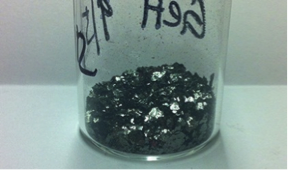 This is the first time anyone has succeeded at growing sufficient quantities of it to measure the material's properties in detail, and demonstrate that it is stable when exposed to air and water. Germanane is desirable for optoelectronics because it has a "direct band gap," meaning that light is easily absorbed or emitted. Materials such as conventional silicon and germanium have indirect band gaps, meaning that it is much more difficult for the material to absorb or emit light." This is the first time anyone has succeeded at growing sufficient quantities of it to measure the material's properties in detail, and demonstrate that it is stable when exposed to air and water. Germanane is desirable for optoelectronics because it has a "direct band gap," meaning that light is easily absorbed or emitted. Materials such as conventional silicon and germanium have indirect band gaps, meaning that it is much more difficult for the material to absorb or emit light."
Source: Read the full article...
|
|
An Atom-Level View of Silicon Nanowire Doping
| From Northwestern University, April 19, 2013, by Sarah Ostman: "Researchers at Northwestern University's McCormick School of Engineering, working with collaborators from École Polytechnique de Montréal in Canada and Max Planck Institute of Microstructure Physics in Germany, have recently used atom-probe tomography to reveal details about the doped silicon nanowires on an 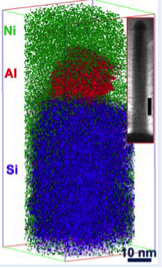 atomic level. The research pinpointed the three-dimensional positions and elemental identities of the atoms in the nanowires. Scientists have learned that nanowires' properties can be customized by doping, or adding trace amounts of impurities. Great precision is required in order to maximize the effects, but because of the nanowires' extremely small size, an atomic-level understanding of the doping process remains elusive." atomic level. The research pinpointed the three-dimensional positions and elemental identities of the atoms in the nanowires. Scientists have learned that nanowires' properties can be customized by doping, or adding trace amounts of impurities. Great precision is required in order to maximize the effects, but because of the nanowires' extremely small size, an atomic-level understanding of the doping process remains elusive."
A paper about the research, "Colossal Injection of Catalyst Atoms into Silicon Nanowires," was published in the journal Nature.
Source: Read the full article...
|
|
Graphene Stakeholders Association
| |
From Graphene Stakeholders Association, April 18. 2013, by Steven Waite: "A new non-profit organization was launched to promote the responsible development and commercialization of graphene and graphene-enabled products. The Graphene Stakeholders Association (GSA) is a 501(c)6 enterprise headquartered in Buffalo, NY. The GSA's founders include Keith Blakely, a 35 year veteran of the advanced materials and nanotechnology community, Dr. Alan Rae, CEO of the Nano Materials Innovation Center, Vincent Caprio, Executive Director of the NanoBusiness Commercialization Association, and Stephen Waite, Managing Partner of SoundView Technology Group. Mr. Waite and Mr. Blakely will serve as co-Executive Directors of the GSA.
The GSA was created to foster graphene-based education, technical collaboration, scientific exchange, and value and job creation through successful commercialization. It is envisioned that GSA members will be part of a premier network that joins all major graphene stakeholders - researchers, government agencies, producer, and user companies - around the world. The GSA seeks broad membership that includes graphene researchers, universities, government labs and agencies, emerging and established corporations engaged in exploring this unique material and its commercialization."
Source: Read the full article...
|
|
Materials Analysis by Colored Picosecond Acoustics Technology
|
From Advanced Materials & Processes, April 2013, Vol. 171, No. 4, 2013:
"CEA-Leti, Grenoble, France, and Menapic, Lille, France, announced a joint-development program to apply colored picosecond acoustics to materials analysis. Menapic's colored picosecond acoustics (APiC) technology is an innovative tool to characterize the mechanical properties of thin films. It reproduces the principle of sonar in nanoscale structures: a spectroscopic pulsed-laser source is used to generate acoustic waves in thin-film stacks. By analyzing the propagation of the acoustic pulse in the stack, APiC enables the characterization of each layer. The program will extend the use of the technology in the microelectronics industry and thin-materials analysis."
The CEA-Leti is the Laboratory of Electronics and Information Technologies (LETI) of CEA ,the French government-funded technological research organization.
Source: Read the full article...
|
|
Do You Have an Interesting Article to Share?
|
Interested in sharing the latest news in vacuum coating technology? Forward us a link to an article you want to share with the rest of the SVC readership to publications@svc.org. Purchase advertising space in this newsletter by contacting SVC at 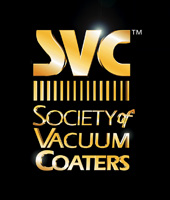 svcinfo@svc.org. svcinfo@svc.org.
Society of Vacuum Coaters
71 Pinon Hill Place NE
Albuquerque, New Mexico 87122
505-856-7188
|
|
|
|
|